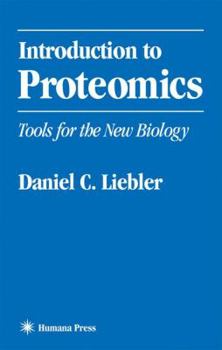Introduction to Proteomics: Tools for the New Biology
Select Format
Select Condition 
Book Overview
Daniel C. Liebler masterfully introduces the science of proteomics by spelling out the basics of how one analyzes proteins and proteomes, and just how these approaches are then employed to investigate... This description may be from another edition of this product.
Format:Paperback
Language:English
ISBN:0896039927
ISBN13:9780896039926
Release Date:December 2001
Publisher:Humana
Length:198 Pages
Weight:0.60 lbs.
Dimensions:0.7" x 5.3" x 8.2"
Customer Reviews
1 rating
Very readable introduction to Proteomics
Published by Thriftbooks.com User , 20 years ago
This very readable book provides an excellent overview of proteomics. It gives a survey of techniques, comparing them and explaining why and when they are used. This is not the place to learn any method in detail. But it is the only book I have seen that you can read cover to cover in a few days and get the big picture of the field. Some caveats: each chapter has only 3 or 4 references, and the book focuses on methods connected to mass spectrometry. But if you want a quick and pleasant introduction to methods for purifying and identifying proteins, including discussions of ICAT, protein complexes and post-translation modifications, I highly recommend this book.




